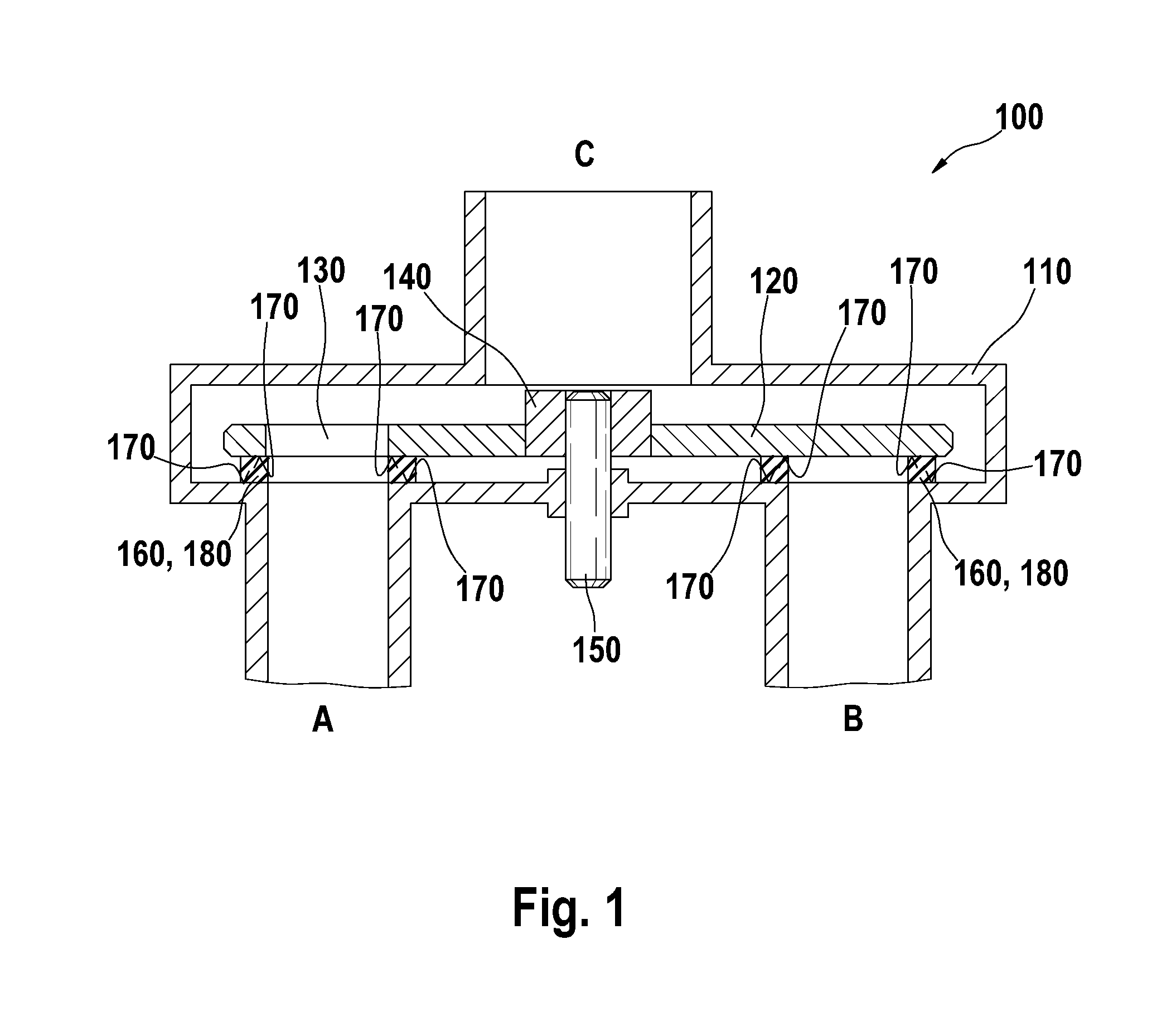Spring-elastic axial seal
a technology of axial seals and springs, applied in the field of seals, can solve the problems of more difficult displacement of bearing faces with respect to sealing faces, and achieve the effects of improving the sealing action of seals, reducing the risk of wavy profiles, and facilitating the bending of wavy profiles
- Summary
- Abstract
- Description
- Claims
- Application Information
AI Technical Summary
Benefits of technology
Problems solved by technology
Method used
Image
Examples
first embodiment
[0025]FIG. 2 shows a sectional view of a seal 160 for the valve 100 from FIG. 1. The seal 160 runs along the circular contour 180 (not depicted) which runs perpendicularly with respect to the drawing plane. For reasons of symmetry, only one sectional plane of the seal 160 is illustrated, and at the left margin of the drawing the bisecting line is depicted which at the same time forms a mid-axis of the contour 180.
[0026]The seal 160 comprises a sealing element 210, a first spring element 220 and a second spring element 230. The sealing element 210 has at the top and bottom in each case a sealing face 240 for contact with a bearing face 170 (not depicted). Between the spring elements 220 and 230 the sealing element 210 comprises a web 250. The sealing element 210 has at the top and bottom in each case a sealing lip, the removed boundary faces of which form the sealing faces 240. In the region of the upper sealing lip, the first spring element 230 is arranged in the form of a U-shaped ...
second embodiment
[0031]FIG. 3 shows a sectional view of a seal 160 for the valve 100 from FIG. 1. The embodiment illustrated corresponds to that from FIG. 2, the difference being that the legs 260, 270 of the U-shaped profiles of the spring elements 220 and 230 point outward and are covered inwardly by the sealing element 210. This type of construction is recommended in the case of a pressure drop from the outside inward, in order to increase a pressing action of the sealing faces 240 to the corresponding press-on faces by means of the pressure drop.
third embodiment
[0032]FIG. 4 shows a sectional view of a seal 160 for the valve 100 from FIG. 1. The seal illustrated is constructed in a similar way to the embodiment illustrated in FIG. 3, but, in contrast to the U-shaped spring elements 220 and 230 in FIG. 3, V-shaped spring elements 220, 230 composed of a V-shaped profile are used. These have a lower spring constant in the vertical direction than the spring elements 220, 230 composed of a U-shaped profile from FIGS. 2 and 3 and thus ensure a lower spring constant of the overall seal 160 in the vertical direction between the sealing faces 240.
PUM
 Login to View More
Login to View More Abstract
Description
Claims
Application Information
 Login to View More
Login to View More - R&D
- Intellectual Property
- Life Sciences
- Materials
- Tech Scout
- Unparalleled Data Quality
- Higher Quality Content
- 60% Fewer Hallucinations
Browse by: Latest US Patents, China's latest patents, Technical Efficacy Thesaurus, Application Domain, Technology Topic, Popular Technical Reports.
© 2025 PatSnap. All rights reserved.Legal|Privacy policy|Modern Slavery Act Transparency Statement|Sitemap|About US| Contact US: help@patsnap.com



